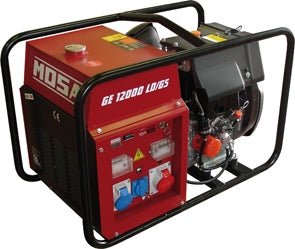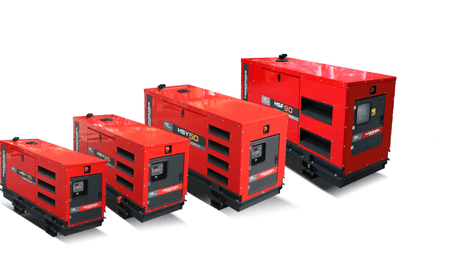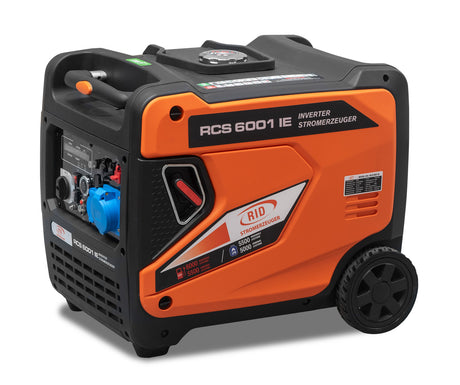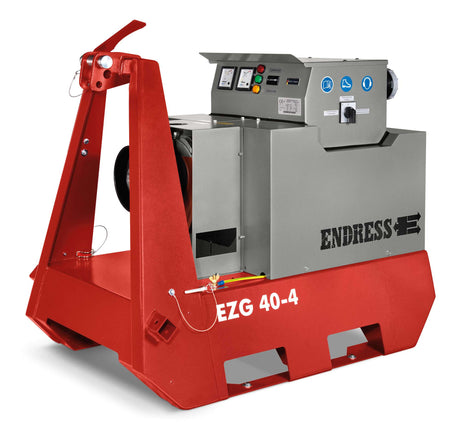MOSA (KOHLER engine)
- Best selling
- Alphabetically, A-Z
- Alphabetically, Z-A
- Price, low to high
- Price, high to low
- Date, old to new
- Date, new to old
FilterFilter and sort
Mosa
MOSA GE 12000 HZDT portable power generator
Selling price €7.068,60 Normal price €8.710,80Basic price /Not available
MOSA (KOHLER engine)
(1 products)MOSA
MOSA was founded in 1963 and has been producing welding units and power generators ever since. The company has its administration and production facilities in Cusago, near Milan, Italy. The company premises extend to over 75.000 square meters. The production and other departments have more than 12.000 square meters of covered space available. Since its founding, MOSA has manufactured and sold hundreds of thousands of welding units and power generators worldwide. MOSA works according to the internationally recognized quality assurance system ISO 9001. The name MOSA is synonymous with quality and precision. MOSA GmbH, based in Munich, ensures customer proximity for Germany. There is also a central warehouse with a service center and several sales offices.
The range of power generators built by MOSA ranges from small 1-phase portable 1kVA devices to 275 kVA three-phase power. But the large selection of welding units for manual electrode welding also covers the DC welding current range up to 800 A. And don't forget the combination units for MIG/MAG and electrode welding (CC/CV). In particular, the multi-functional units with digital welding control WDC can be used universally. It is noteworthy that all MOSA welding units have alternating current and three-phase current outputs. This means nothing other than that when you buy a welding unit, you also buy the power generator corresponding to the generator output - of course for the price of one device! MOSA only supplies super-silenced (SX) and silenced (S) machines in accordance with European noise protection standards No. 535 (welding machines) and no. 536 (power generator). By installing encapsulated motors and other noise protection measures, MOSA easily meets these standards. Service is the priority at MOSA. MOSA only uses the best and proven materials for the production of its products in order to guarantee the user maximum safety. Worldwide service is available to every buyer. For the German sales area, the most common device types and spare parts are in stock in the German central warehouse and service center (near Ingolstadt).
KOHLER ENGINES
The beginnings of KOHLER engines can be traced back to 1920. Designed to serve rural markets, it provided 110-volt DC power and was powered by a four-cylinder KOHLER water-cooled cast iron gasoline engine.
In 1939, work began on the development of liquid-cooled diesel engines. A variety of models are planned - speed constant 1200 revolutions per minute for engines KOHLER generators; Engines would range from a single-cylinder 5 hp to a four-cylinder with 20 hp. Variable speed engines up to 2400 RPMs from 10 to 60 HP. High-speed diesel from 5 to 20 hp for the US Navy.
In 1948, Kohler increased the company's focus on engine manufacturing by opening a small engine factory and introducing the first "stand alone" KOHLER engines for industrial applications. Just three years later, Kohler's K90 iron single-cylinder air-cooled engine began production, followed by the K160 in 1952. In the 1950s, Kohler added engines to its K-series and in 1959 introduced the first of four "interchangeable" models with common mounting foot pattern and crank height. The decade ended with the groundbreaking ceremony for a new engine and electrical system construction east of Keramik. The building opened for business in 1960 and would be the first of many Kohler "firsts" in the sixties. In 1965, the company introduced automatic decompression valves (ACR) for use on KOHLER engines. This new technology allows for more effortless recoil launches.
The company reached another impressive milestone in 1966 when the one millionth engine came off the assembly line. In 1968, two-stroke engine production began for the snowmobile industry. Just eight years later, Kohler delivered its millionth international engine in 1976.
The company made great strides again in 1983, when the "New Form of KOHLER Power" brought redesigned products and a revived commitment to quality in the engine division. Two-cylinder series II models were launched with full pressure lubrication, steel-backed plain bearings at both ends of the crankshaft and a redesigned connecting rod, to name a few. A year later, Kohler became the first in a series of single and two-cylinder Magnum engines, the result of extensive technical improvements and with a new, elegant redesign. These innovative engines include electronic ignition and superior air filtration for greatly improved reliability. In 1986, the first Magnum vertical shaft twin-cylinder engines were introduced. The next year, Command engines were introduced with OHV features including design and hydraulic lifters for improved efficiency, longer life and quiet operation. In 1991, command two-cylinder horizontal shaft engines first introduced were followed by vertical shaft two-cylinder engines for the commercial and residential lawn and garden markets.
In 1995 there was yet another category change when Kohler's innovation of overhead camshaft (OHC) engines were introduced, a "first" in the industry. The company's relentless pursuit of quality and innovation was recognized in 1998 when Kohler received an award from the National Society of Professional Engineers for its innovative overhead camshaft (OHC) 18 horsepower engine. The award praised the engine as the best new product out of the thousands of new products introduced in 1998 by all major industrial companies. (In 1997, the same award went to Boeing Commercial Airplane Co. for its 777 aircraft.) That same year, the company began production at a new plant in Hattiesburg, Mississippi.
In 1999, the Command PRO series was launched introducing both single and twin cylinder models. These premium engines have been specifically targeted at the commercial lawn and garden tractor consumer. The first Kohler liquid cooled Aegis engine was also introduced in 1999. This top of the line engine was the first to come with a 3 year warranty.
The Courage engine came to market in 2002 with new features including an inverted crankcase sealing operation, dual camshaft for excellent cooling, a bass reflex flow intake for better power and combustion and a cross-flow cylinder head for more airflow and cooler Operation. Last announced in September 2004, Kohler offered higher horsepower offerings, with up to 31 horsepower available on its liquid-cooled Aegis engines.
Kohler Engines introduced its powerful 34-38 HP Command PRO engine line, in 2005. These high horsepower gasoline engines not only provide more power to meet larger and more complex applications, but offer a new design that offers optimal technical performance and extended maintenance intervals .
2007 brought two distinct opportunities for Kohler Engines to expand its product portfolio and international presence. Firstly, Kohler-Yinxiang Ltd, a joint venture company was formed between Kohler Motors and Yinxiang Ltd in Chongqing, China. This joint venture was created to develop, manufacture, market, sell and distribute general-purpose gasoline engines. As part of this joint venture, Kohler Engines launched their first engine for the lawn mower market in October 2007 with the XT series. This engine would continue to evolve in the coming years, into engines used in lawn and garden, power generation, welding and recreational applications.
Later this year, Kohler Co. buys Lombardini Srl, an 85-year-old engine manufacturer headquartered in Reggio Emilia, Italy. Acquisition of Lombardini Kohler Co. allows each brand to serve the needs of commercial and residential customers worldwide, with both gasoline and diesel engines.
In 2008, Kohler Engines announced it would expand its product offerings to include gasoline and diesel engines 4-65 horsepower. Kohler also announced that all of its Command PRO and Aegis two-cylinder engines would come standard with electronic fuel injection (EFI), for greater fuel efficiency and reduced emissions.




